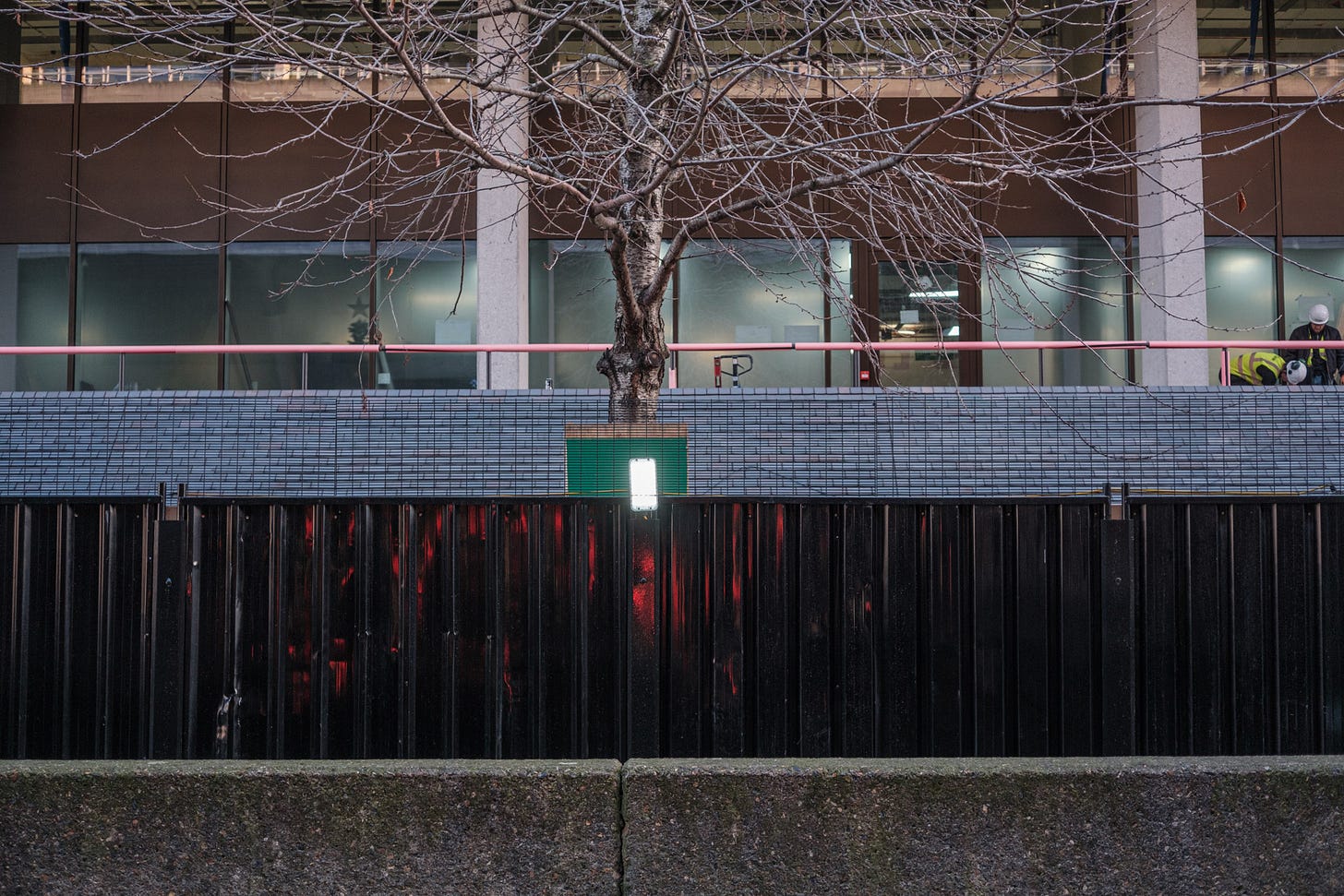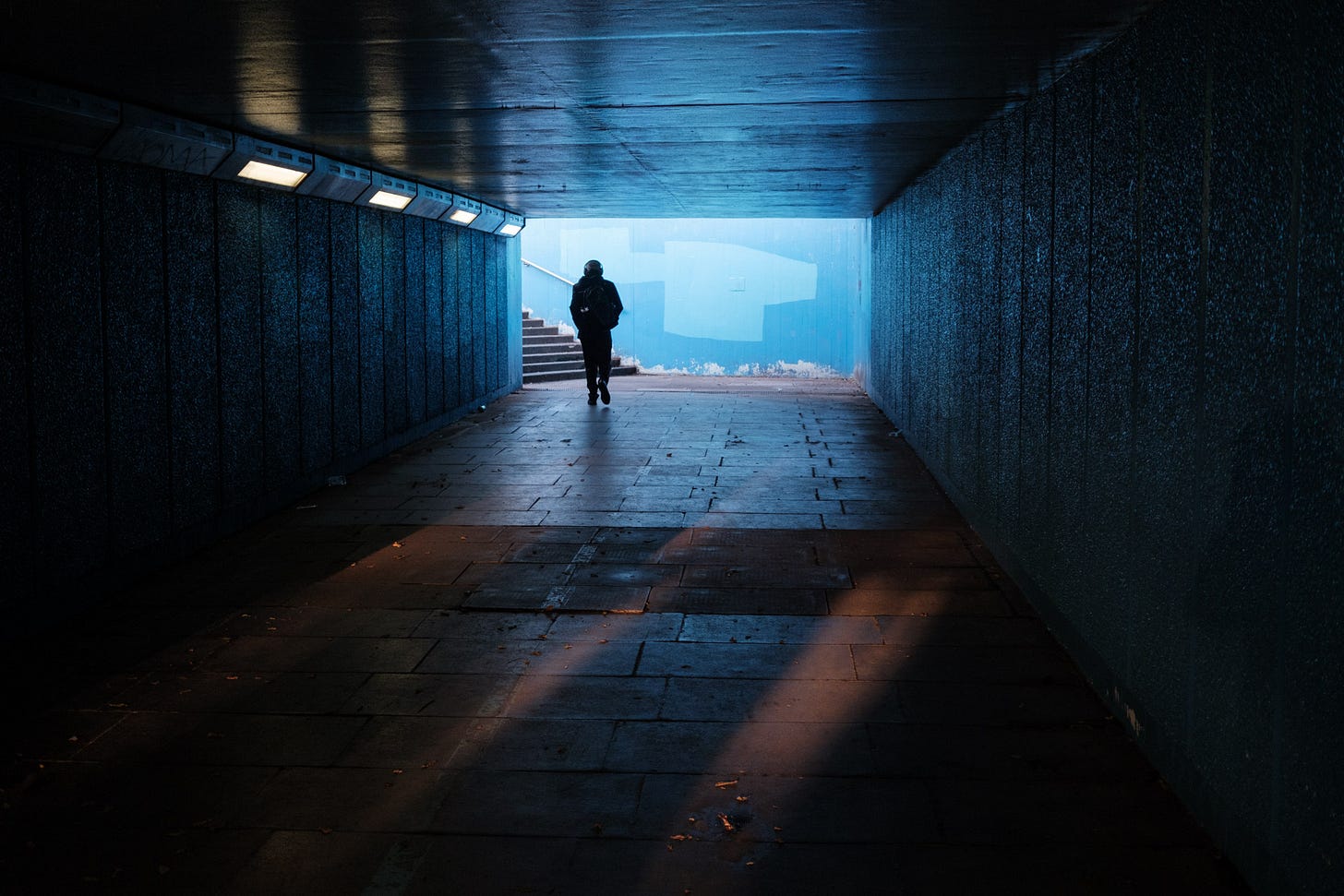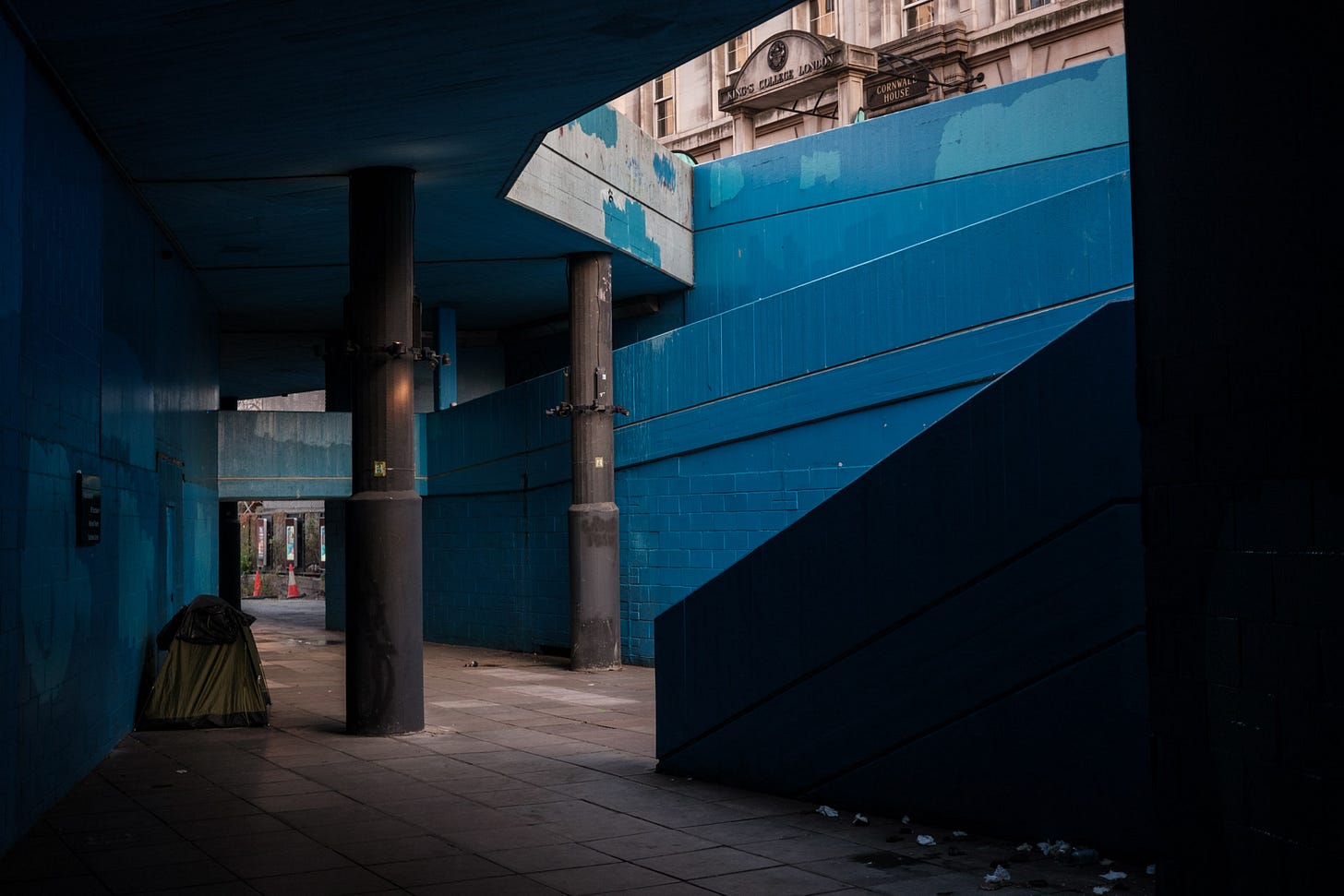The long march to meaning
Where should we focus our efforts, to create something with creative value?
Warning: contains random musings on life, the universe and everything. This week I started with the images to prompt me to choose the topics I’m covering, rather than vice versa.
On the way
Creativity needs meaning to have any substance, but the journey to find that meaning can be a long and winding one. As you know I define real creativity as the combination of different elements in new and unexpected ways, but for this to have meaning it also needs a purpose. I often take photos as I’m walking from one place to another – quite often from Waterloo to Tower Bridge on my way to work – but unless I see some context which tells a story and hints at a wider point of view, the image may be pretty, but unlikely to be satisfying.
To get around this, I am on the look out for three things to give my images a bit more interest and meaning:
Juxtaposition / contradiction. Take a street sign or shop sign which contrasts with the surroundings – ‘all you can eat’ next to a homeless person, an interesting glance between people of different cultures or generations.
A cultural point or social commentary. Trying to spot subjects which mean something (to me) and separating them from distraction of everyday life. A street cleaner next to a city gent, a derelict subway in the midst of expensive hotels.
Something funny. I really try to spot weird and wonderful situations, sometimes involving the two points above. Advertising posters are a good source of this - often strong messages and/or images which people pass by, unknowingly looked over by the ad. It’s a tough one, but great when it works.
In many occasions it is more spending the time looking, walking camera in hand than it is a skillset we need to capture these moments.
Pattern recognition

Patterns are so seductive for photographers – both when they are freakishly uniform and bold, as well as elements unexpectedly break them up. We can work best with shape and form in black and white, but equally have many opportunities for great images playing with colour, contrast and transitions from one shape or pattern to another. My tip for this – remember to look up, around, behind you and take new turns on your way. We tend to plough on regardless, but scenes, objects and architecture look different from different angles. The best image may be just over your shoulder.
Getting demons into the light

Getting more reflective now, creativity for me means expression, and my mood affects what images I look for and seem the best to me at the time. Flip it on its head, and seek out images that suit your mood – dark corners and unkempt scenes for those lower times, bright colourful spots that keep you uplifted, and hopefully the viewer.
I’ve found more recently that recognising what mood I’m in, or what best reflects my general demeanor and attitude, gives me both a starting point for new images but also a way to waste less time looking for images that are unlikely to resonate, no matter how good they are. It is true a great image can lift your mood, and I will feel better after a session of photography no matter how it’s gone, but that is a side benefit, not a focus for your next photowalk.
Of course that could be just me, my neuro-odd brain not processing emotional states very well, but I think it can be more widely applied.
Making meaningful choices in an increasingly unethical world
The last area of meaning in creativity I want to explore builds upon the cultural observation point I made above. The world is a particular sh**show at the moment, with the least ethical and caring people seeming like they are becoming more powerful not less, and problems are being ignore not tackled.
But this should be a motivation for us all to highlight the things that need to change in the world around us with our images, as well as the topics and subjects that go under the radar not because of a lack of discussion or ‘chatter’ (we have plenty of that in the digital age we live in) but because we don’t show the issues in all their complexity and challenge, and the humanity – and context – of why it matters. Image makers above all are great at this, and we have an important place in improving the world around us in this way. If 1 person or 1 million people see it, we can lay bare the issues which written, spoken and video formats struggle to cut through these days – we just have to show it clearly and with the humanity that connects to the world around us.
Keep curious
James
Next week – more musing on our project Inflection, with







Great ideas and thoughts. I try to do the 'spot something funny' too often. But in this day and age it can be a challenge 😉